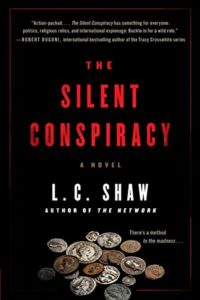Where is the tension in story without an antagonist? The Oxford English Dictionary defines antagonist, (from the Greek), as: “an opponent, rival; One who contends with another in a battle or struggle for mastery.” Antagonists come in many forms: human, animal, natural, supernatural, and sometimes imaginary. When speaking of literature we tend to think of the antagonist’s target (or prey or victim) as human, but protagonists can come in different forms as well. And even though we root for the protagonist, it’s often the character we love to hate that remains in our mind long after we close the cover of a book. Here are nine antagonists so memorable that they’ve gone beyond the pages of the book and become famous in their own right.

Rebecca, in Daphne du Maurier’s Rebecca
Throughout the novel, we’re led to believe that the new Mrs. de Winter can never measure up to the brilliant, beautiful, and beloved Rebecca. We never even learn the name of Max’s second wife, only the labels others give to her. But evidence of Rebecca as the first and seemingly rightful Mrs. de Winter is ubiquitous. We can almost see her signature, written in her elegant hand, the “R” dwarfing the other letters. Even as a ghost, in every way but paranormal, Rebecca dominates the story, her presence almost tangible. When Rebecca’s true character is finally revealed, the extent of her evil and duplicitousness nature lands her solidly in the villain camp.
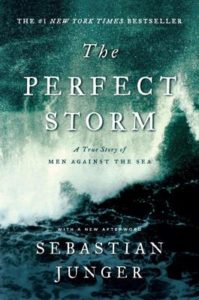
The Storm, in Sebastian Junger’s The Perfect Storm
Man against nature is an age-old struggle. In this case, the storm as antagonist wins. Despite warnings of dangerous conditions, the captain of the Andrea Gail delays changing course for safe harbor and along with all of his crewmates is lost at sea. Based on a true story, is it hubris or simply the convergence of several forces that turns a fishing expedition into a deadly last sail for its crew members?
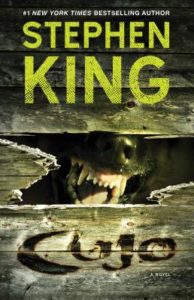
Cujo, in Stephen King’s Cujo
Man’s best friend turned rabid predator makes for a terrifying antagonist, and also an ironic one, since St. Bernards are known as rescuers, not attackers. This animal antagonist is famous and even though he fails in the end, I bet you can’t remember the name of the novel’s protagonist. Here’s a hint. Her initials are D.T.

The Shark in Peter Benchley’s Jaws
The shark is the antagonist in the tale of an unseen monster fish hiding beneath swimmers and waiting to attack. We are in the head of the shark, watching the next victim from beneath the water’s surface. We know what’s coming, are unable to give warning, almost as if we are complicit in the death that will soon occur.
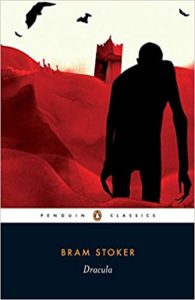
Count Dracula, in Dracula
Exuding old world charm and seduction, Dracula mesmerizes his targets until they are almost begging to be victimized. He’s an antagonist that elicits admiration for his sophistication and intellect and has inspired countless romanticized variations in film and television where the vampire has changed from antagonist to protagonist despite the inevitable disastrous effect on those who embrace him.
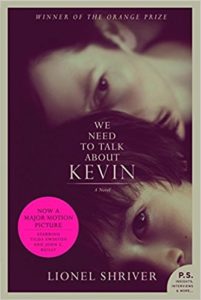
Kevin, In Lionel Shriver’s We Need to Talk about Kevin
This novel is a fascinating and frank discourse on what happens when the maternal bond is never formed. Is Kevin born bad or has his emotional development been damaged by an apathetic mother unable to feel any love for him? As the story progresses, it becomes clear that Kevin’s psychology is much more complicated and the extremes to which he’s willing to go to get her attention are both shocking and maliciously evil.
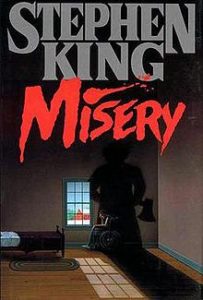
Annie Wilkes, in Stephen King’s Misery
Every writer appreciates fans but no one wants one like Annie Wilkes. At first, she appears wonderful, rescuing Paul Sheldon from a terrible accident and as a trained nurse taking good care of him. How could someone so cheerful and optimistic be anything but good? The dark side of Annie appears as we witness her metamorphosis from Good Samaritan to unhinged obsessive. Here again, as in Cujo, we are confronted with an antagonist who goes against our expectations. A nurse should be dedicated to the welfare of her patient, not the one who harms him.

Abigail Williams, in Arthur Miller’s The Crucible
Abigail’s ability to manipulate and pit others against each other while sitting back and calmly watching makes her diabolical and dangerous. Also based on true events, it’s a terrifying and believable look at the power of gossip and jealously to ruin lives.
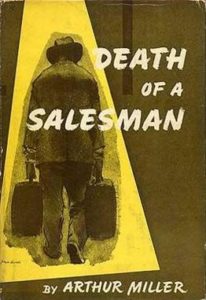
Willy Loman, in Arthur Miller’s Death of a Salesman
Willy Loman is both the protagonist and antagonist whose desperate pursuit of the American dream blinds him to what has true value in this tragic tale of self-delusion and unattained ambition. As his family relationships are fractured, he remains fixated in denial and perpetuates the downward spiral of his life. He becomes his own worst enemy, ultimately sacrificing everything rather than owning up to his mistakes and trying to change.
*
Great antagonists evoke fear, horror, hatred and at the highest literary level––fascination. And this fascination, despite their evil intent or villainous actions, is what makes them memorable. It’s what moves them from book to film to reality, as if we almost believe they exist in our physical world. Their names are universally recognized and have become part of our anti-hero lexicon.
But perhaps part of what turns an antagonist into an iconic villain is an author’s ability to arouse in the reader a small degree of empathy for what that antagonist might have suffered before becoming a monster. It’s a question I’ve asked about the brilliant mastermind Damien Crosse in my novel, The Silent Conspiracy. There are no lengths to which he will not go and his belief that his cause is the right one allows him to justify any action, however heinous. But what if instead of him suffering an abusive upbringing it had been nurturing? He could easily have become the hero of the story instead of the villain. Or maybe not.


